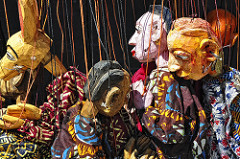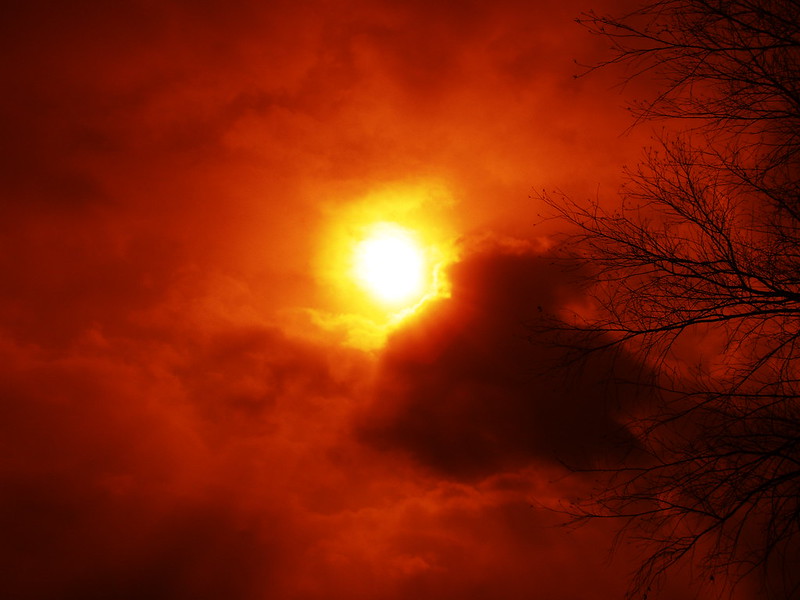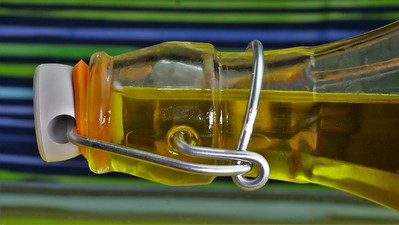The Heart of the Beast Puppet and Mask Theater is on a stretch of East Lake Street lined with Latino and African businesses. The South Minneapolis theater is committed to the Powderhorn Park neighborhood, to social and environmental justice, to creating community through puppet theater. Every year for a decade, I’d watched the theater’s May Day parade. The first Sunday in May, the parade ran down Bloomington Avenue to Powderhorn Park, where the theater held a Tree of Life Ceremony, and afterwards hosted a festival. The giant puppets were strange and beautiful, the political statements loud and unequivocal. It was an event that wouldn’t happen in Saint Paul, with its quiet streets and big houses. Every April, HOBT had open workshops. Anyone could learn to make a mask or puppet, and be in the parade.
I lived in a big house in St. Paul, raised kids, grew older, and felt in a world sealed off from the artists and raucous young people celebrating in the park after the parade. But I was drawn by those puppets. Seven months after 9/11 and the start of the war in Afghanistan, the kids and I went to our first workshop. The theater welcomes everyone, but as a middle-class owner of a minivan, I was shy of being an interloper, a gentrifier. The kids were my cover.
In the entryway, Sandy, the artistic director, used storyboards drawn by the artists to tell the story of the parade. In February, the theater had held community meetings so that the artists and the public could collaborate on a theme. The theme in 2002 was “Mayday! Mayday!”—making peace in the face of war and retribution. We walked around the theater, looked at the giant puppets already made, and chose a section to be in. The kids wanted to be birds.
Lucinda worked in the clay room. She taught us: pack crumpled newspaper into a plastic bag, tape the stuffed plastic bag to a piece of cardboard or wood, cover it with clay, and begin to mold. Shape and smear the clay with your fingers and thumbs, tear away bits of clay, but if it doesn’t look right, smooth it out. Study the pictures of birds taped up around the theater. Ask for advice from an artist. Press and mold with your thumbs, and when there’s a flicker of life in the mask, work toward that life with your eyes and fingers. Mask making was a hands-on experience of becoming.
The workshops are Tuesday and Thursday evenings and twice on Saturdays. Every year we went four or five times, and made more bird masks, turtles, butterfly wings for my daughter to wear while walking on stilts. The workshops were fantastic and chaotic. Little kids ran around, dipping their hands in buckets to wash off the clay. People of every age, speaking different languages, sat on the floor or bent over tables, intent and busy making art beneath the huge puppets that hung overhead. The artists were gracious and patient with the adults and children crowded around them. After the public left, the artists stayed up all night and made giant butterflies, beehives, and moose out of paint and garbage.
By 2012, my kids were deep into adolescence and no longer wanted to stilt or make masks. I went alone. The parade’s theme that year was “The End of the World as We Know It.” I decided to be in Gustavo, Munir, Tina, and Bart’s section—“Break the Spell.” The spell was the one that isolates people from one another. Bart was making giant deer spirits.
I studied pictures of deer: the muzzle, the lines of the jaw and neck, the square soft-looking black nose. I started with a coffee can as a base, topped it with a plastic bag stuffed with newspaper, covered it with clay, and began to mold. I propped the jaw on a yogurt container. The head looked terrible, nothing like a deer’s. I smoothed out the clay, and began again.
The workshops were exhilarating, but my chunk of clay covered in plastic wrap did not resemble the gorgeous deer heads Bart had made. There were only a few workshops left until the parade. I took the coffee can and clay home, and covered my kitchen wall with pictures of deer. I studied the deer, and molded with my thumbs, but it was never right, so I smoothed it out and started over, again and again. Then my son pointed out the prominence of a deer’s brow bone. It took shape. There was a flicker of life. A deer began to emerge. I covered the head with papier-mâché, five layers, newspaper alternated with brown paper bag. I allowed the head to dry, slit the back, lifted it off the clay mold, and there it was. I attached cardboard ears. One of the ears drooped a little. It was asymmetrical, but lifelike; it looked like the deer was listening. I dry-brushed the skin brown, painted in the big dark eyes.
The head rode high above me. I peered out a little screen beneath the neck. I was invisible inside a white gown on which I’d painted a heart with blood red roots, the green shoots rising above it.
The morning of the parade, Aztec dancers whirled in warm-up. There was drumming, frantic activity as puppets were adjusted and put on, stilts tied and tightened, and then we began, a slow movement at first. We came around the bend. People were sitting on the curb, pressed together on the sidewalk. Old people, young people, children, babies, many in the middle like me. Black, white, Native American people, people from all parts of Asia, Africa, Central and South America. Poor, rich, and middle-class. In the sunlight, people from every corner of this world and these cities watched the deer spirits break the spell.
Aurelia Wills‘s stories have been published in journals and anthologies including American Fiction Volume XII: Best Unpublished Stories by Emerging Writers. Two of the stories were nominated for the Pushcart Prize. Her debut novel, The Last, Truest Name of Leah Lobermier, will be published by Candlewick Press in 2016. She teaches creative writing and ESL to immigrants in Minneapolis.
[Purchase your copy of Issue 10 here.]




